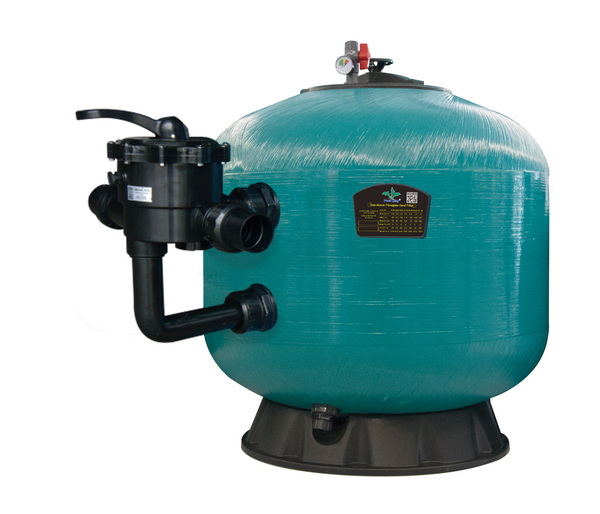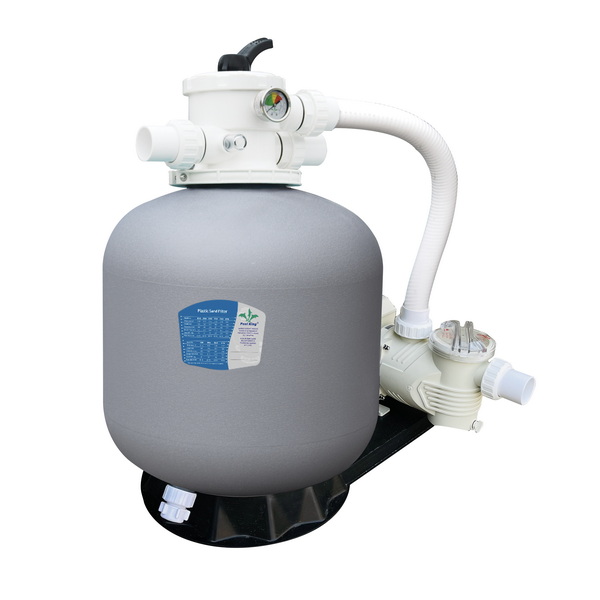Views: 222 Author: Tina Publish Time: 2025-11-06 Origin: Site








Content Menu
● Recommended Replacement Frequency
● Signs Your Filter Sand Needs Changing
● Step-by-Step: How to Change Pool Filter Sand
● Choosing the Best Filter Media
>> Silica Sand
● Maintenance to Extend Sand Life
● Troubleshooting Common Filter Sand Issues
● Innovations and OEM Production in Filter Technology
● Environmental Disposal and Sustainability
● Alternatives to Sand Filtration
>> Diatomaceous Earth (DE) Filters
● Professional vs. DIY Sand Replacement
● Smart Filtration and Future Trends
● FAQ
>> 1. How do I know it's time to change my pool filter sand?
>> 2. What kind of sand is best for my pool filter?
>> 3. How much sand should I use in my filter?
>> 4. Can I reuse old pool filter sand?
>> 5. Are sand filters better than cartridge or DE filters?
>> 6. What maintenance extends sand life?
>> 7. How do I dispose of used pool sand?
>> 8. What are the signs of broken filter laterals?
Having clear, healthy water in a swimming pool depends not only on the right chemicals but also on the effectiveness of your filtration system. Among various filtration solutions, sand filters remain popular due to their reliability, affordability, and straightforward maintenance. Yet, the sand within the filter doesn't last forever. For foreign brands, wholesalers, and manufacturers purchasing from Chinese OEM suppliers, knowing how and when to replace sand is vital for maintaining superior pool performance and maximizing product value.[3][11][12]

Sand filters employ a bed of silica sand to trap dirt, debris, algae, and oil as pool water passes through the tank. Sharp granules in new sand create tiny gaps that catch contaminants, allowing only clean water to re-enter the pool. Over months or years, sand edges become smoother due to wear, reducing their ability to filter efficiently.[7][11][14]
- Sand filters generally require less maintenance than other systems, such as cartridge or DE filters.[14]
- Most are designed for DIY maintenance, supporting OEM buyers' need for easy product servicing.[15][16]
Advantages:
- Reliable and cost-effective for pools of all sizes.[11]
- Simple to use and maintain.
- Longer service intervals compared to cartridge filters.
Limitations:
- Sand wears out, affecting performance.
- Limited efficacy against very fine particles unless upgraded media are used.[7]
Pool filter sand should be replaced every 3 to 5 years. Factors that affect how often include:
- Pool usage: Heavily utilized pools (resorts, apartments, public pools) may require more frequent sand changes, potentially every 2–3 years.[6][11]
- Water chemistry: Unbalanced chemical levels (high pH, heavy calcium) can shorten sand life.
- Filter model and size: Manufacturer recommendations may differ, so always consult specs.[5][15]
Most importantly, inspect sand annually—especially before peak swimming season.
Several symptoms signal it's time to change the sand:
- Cloudy or green pool water persists despite chemical treatment.
- Filter pressure gauge stays high after backwashing or needs frequent backwash (8–10 psi above baseline).[12][7]
- Short filtration cycles.
- Sand visible in the pool, usually caused by cracked filter laterals.[5]
- Old sand feels muddy, greasy, or compacted.
This section provides a comprehensive guide for replacing sand in any major filter brand. Enhanced for clarity and detail:
1. Turn Off Pump and Water Supply: Power down all systems and ensure water flow from pool is blocked.
2. Open the Filter Tank: Remove multiport valve or tank cover; consult your model's instructions.[3][5][7]
3. Release Pressure: Open the air relief valve, if present.
4. Drain the System: Pull out the drain cap at the tank base to remove standing water.
5. Remove Old Sand: Scoop or vacuum out all sand. Wear gloves to avoid bacterial exposure.[6][5]
6. Inspect Laterals and Components: Check plastic laterals at tank bottom for cracks; replace if needed.
7. Rinse Tank Interior: Use a garden hose to flush out debris and residue.
8. Cover Standpipe: Tape or plug to prevent new sand from falling inside standpipe.[3][7]
9. Add Water, Then Sand: Fill tank halfway with water to cushion laterals, then slowly add new filter sand. Consult specs for precise sand quantity (usually 100–350 lbs or ⅔ of the tank).[5][7]
10. Reassemble and Reconnect: Attach cover/valve, reconnect hoses, replace drain plug.
11. Backwash and Rinse: Run a backwash for ~2 minutes and rinse cycle for ~1 minute to settle new sand and flush out loose fines.[3][7]

Most filters use #20 grade silica sand, balancing filtration efficiency and flow rate. It's affordable, widely available, and recommended by most manufacturers.[11][7]
- Glass Media: Made from recycled glass, this eco-friendly option captures finer particles and offers longer service life. It may cost more but increases filter longevity.[7]
- Zeolite: Highly porous and efficient, zeolite can reduce chlorine usage and improve water clarity but requires careful handling.
For OEM buyers, consulting with suppliers ensures compatibility and meets export standards for global pool installations.
Taking steps to maximize the lifespan of your sand filter reduces costs and downtime:
- Regular Backwashing: Remove trapped debris weekly or as needed (when pressure gauge rises).
- Clean Sand Annually: Use filter cleaner once a year to dissolve oils and biofilm.[6]
- Monitor Water Chemistry: Keep pH, alkalinity, and sanitizer levels balanced to prevent sand degradation.
- Annual Inspection: Open filter each year and check sand for wear, contamination, or channeling—especially before peak season.[11]
Can indicate debris-clogged sand or blocked pipes. Backwash and rinse filter; if the problem persists, inspect sand and laterals.[7]
Commonly caused by broken laterals. Repair or replace before adding new sand.[5][6]
Old sand saturated with oils or algae loses filtering power; replacement is usually necessary.
China's pool equipment factories leverage smart manufacturing, precision molding and robotic assembly to produce high-quality sand filters for international brands.[16][15]
- Automated quality control ensures media consistency and optimal water flow.
- Factories can customize specifications, packaging, and features to suit buyer needs.
For commercial pools and high-end installations, upgraded sand filters can be integrated with water pumps, smart controls, LED lighting and accessories.
Responsible sand disposal protects local ecosystems—never dump sand directly into waterways.[17]
- Used sand can support landscaping (base fill, concrete aggregate) if free from hazardous waste.[17]
- Some regions offer pool sand recycling services.
Require less sand and no annual chemical cleaning, but need more frequent replacement and are suited for smaller pools.[14]
Capture extremely small particles but have complex maintenance requirements.
Choosing the right technology depends on pool size, usage, and owner preferences.
Though many pool owners manage sand changes themselves, professional service is advised for complex systems, high-volume pools or where warranty protection is preferred.
- Trained technicians provide lateral inspection, full system cleaning, and optimal sand media replacement.
- Commercial OEM buyers benefit from supplier-offered aftersales support.
Asia's pool filter innovators are rapidly adopting AI-driven diagnostics and cloud-connected monitoring. These technologies help optimize backwash cycles, anticipate media replacement needs, and reduce manual labor—potentially saving international clients time and costs.
Changing your pool filter sand every 3 to 5 years is crucial for maintaining crystal clear, healthy water. With advances in smart filtration from OEM suppliers and careful maintenance scheduling, owners and distributors can maximize the value of sand filter technology.
Regular sand replacement (every 3–5 years), consistent backwashing, and annual inspections are essential to keep your pool water sparkling and safe. Collaborating with reputable OEM suppliers for advanced sand filters, appropriate filter media, and timely service will ensure top performance, lower maintenance costs, and satisfaction for international clients seeking high quality and reliability. Upgrade your sand filter system today to experience the benefits of modern pool filtration technology.[15][12][11][7]

If your pool water stays cloudy, filter pressure remains high after backwashing, or you notice sand in your pool, it's time to inspect or change your filter sand.[12][7]
#20 grade silica sand is standard, but glass media and zeolite offer enhanced filtration for premium applications.[11][7]
Check your manufacturer's specifications—most residential filters require 100–350 lbs (45–160 kg) of media.[5][7]
No. Old sand loses its sharp edges and filtering power, often becoming saturated with oils and debris.[17]
Sand filters are the most cost-effective for large pools and easy to maintain, but cartridge and DE filters capture finer particles for specialized needs.[14]
Backwash regularly, balance water chemistry, and use annual filter cleaners to prevent clumping and contamination.[6]
Dispose as non-hazardous waste or repurpose for landscaping—never dump used sand in waterways.[17]
Sand returning to the pool and low flow rates usually indicate damaged laterals. Replace immediately during sand changes.[5]
[1](https://boutique.piscinehippocampe.ca/en/blogs/guide-piscine/changer-sable-filtreur-piscine-guide)
[2](https://www.youtube.com/watch?v=v9ghBgNkv-4)
[3](https://splashfiberglasspoolcompany.com/a-guide-to-know-how-often-to-change-sand-in-pool-filter/)
[4](https://www.inyopools.com/HowToPage/how_to_change_sand_in_a_sand_filter.aspx?CommentPage=2)
[5](https://www.thepoolfactory.com/blogs/pool-care/how-to-change-the-sand-in-a-pool-filter)
[6](https://pleasantpools.com/sand-changing/)
[7](https://www.doheny.com/help/pool-filter-sand)
[8](https://www.youtube.com/watch?v=C70OeMKv8AY)
[9](https://www.reddit.com/r/swimmingpools/comments/c5fyrs/how_to_change_sand_in_this_sand_filter/)
[10](https://www.facebook.com/groups/637529959937311/posts/2541640972859524/)
[11](https://www.groupebellemare.com/en/blog/change-pool-filtration-sand/)
[12](https://www.poolsoffun.com/4-signs-its-time-to-change-your-filter-sand/)
[13](https://www.youtube.com/watch?v=MnMP2Awhwgo)
[14](https://www.vevor.com/zh-CN/diy-ideas/cartridge-vs-sand-filter-b_10134/)
[15](https://www.laswim.cn/Pro/view/id/26.html)
[16](https://www.emaux.com.cn/show_list.php?id=8)
[17](https://blog.orendatech.com/refurbishing-sand-filter-vs-sand-change)
